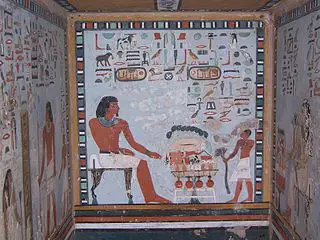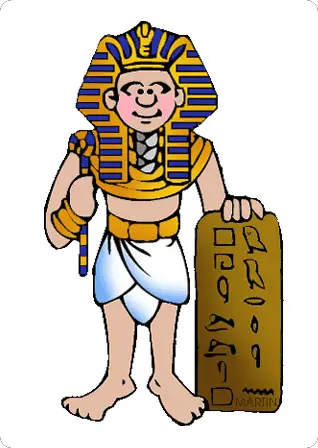Ancient Egyptian Craftsmen
Most Ancient Egyptian craftsmen were important to the community and they were trained to be skilled in what they did. Most of them would work in ships with other craftsmen.

Objects
Craftsmen were known to make many important objects in Ancient Egypt. They would make things for the pharaoh and for his temple.
Craftsmen did not just make something, what they made was usually very fancy and beautiful. Not only was it nice to look at though, it was always used for something important.
Afterlife
Many times, a craftsman would be hired to make objects for a tomb so that the person that died could take it with them to the afterlife.
Many of these things included amulets, funeral jars, pottery, figurines, grave goods, weapons, paintings and more.
These different goods would be put in the graven and it would let the person that died continue to have good things when they went into their afterlife.
Craftsmen and Artists
Many craftsmen and artists worked hand in hand. They were able to do both artwork and carvings or other crafts.
Craftsmen were considered very important and sometimes even magical because they worked so hard to make sure that the afterlife was continued.
Sometimes, craftsmen would make things such as toys and animal engraved images. When craftsmen would work or paint, they would usually paint people so that they were standing at their side and not forward. It would look like the person in the picture or carving was facing the side and not the front.
Craftsmen made men and women to look different and would use light colors to make women and darker colors to make men.
Signing the Work
Craftsmen were not allowed to sign the work that they did. Even if they didn’t sign it, everyone would know a good craftsman if they made something.
Working
It didn’t matter what a craftsman family did. If someone wanted to become a craftsman, they could become one. They would go and they would train in shops with other craftsmen so that they would know what to make.
There were different levels of craftsmen, some worked in shops while others worked in the palace and with royalty.
It was important for royal people and rulers to know good craftsmen because they needed their tomb to be completely decorated and worked on.
Most craftsman would work as sculptures, metal workers, painters and stone cutters. These were the most important jobs that craftsmen would have, and architecture played a huge role in this as well.
Workshops
Most craftsmen would work together in workshops that were considered official. This would mean that they were created by the royal family and they would be located usually in a temple or in a Royal workshop.
The craftsmen would work together with other craftsmen and they would often work to make grave goods and other items for the pharaoh or the king.
More Facts About Ancient Egyptian Craftsmen:
- Ptah was considered one of the most important craftsmen.
- Craftsman would work with different materials such as stone, granite, bronze, gold and copper.
- Craftsmen would never be known for their personal skills; they would only be known as a group for their work.
- A craftsman’s lifestyle would depend on what skills he had.
- Craftsmen were forced to follow certain rules and laws when they built things.
What Did You Learn?
- Who were the Ancient Egyptian craftsmen? Ancient Egyptian craftsmen could be people from all different types of backgrounds. They did not have to follow in the footsteps of their family if they wanted to be craftsmen.
- What kind of materials to craftsmen use? Craftsmen used different types of materials such as wood, copper, gold, bronze, stone, quartz and more.
- What was most important about craftsmen? Craftsmen were important because they made grave goods for pharaohs and kings that were needed for the afterlife.
- What were some things that craftsmen made? Craftsmen made paintings, sculptures, amulets, pottery and more.
- Did most craftsmen have their own shops? No, most craftsmen worked in shops together, sometimes in a Royal workshop and sometimes in a temple.



